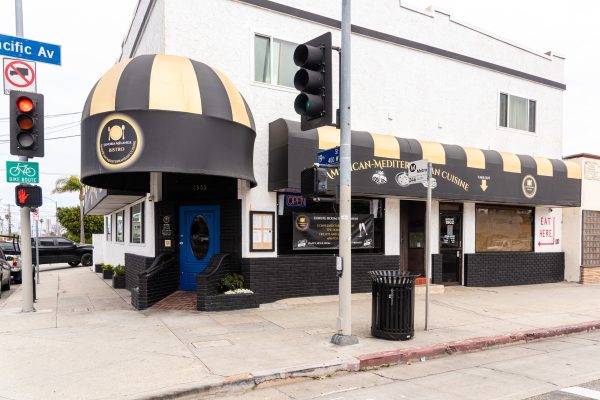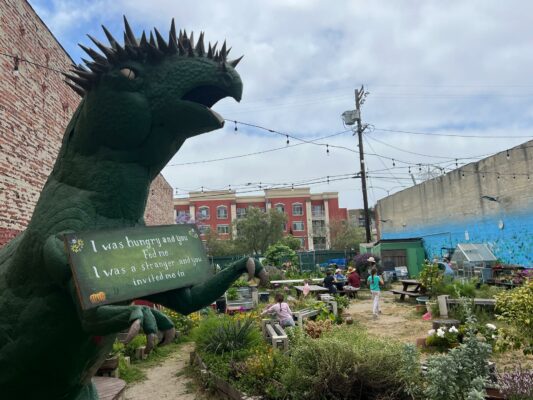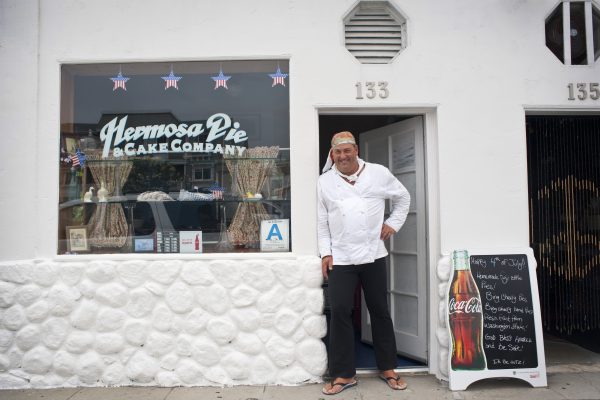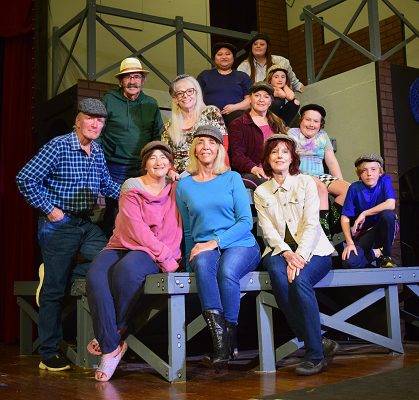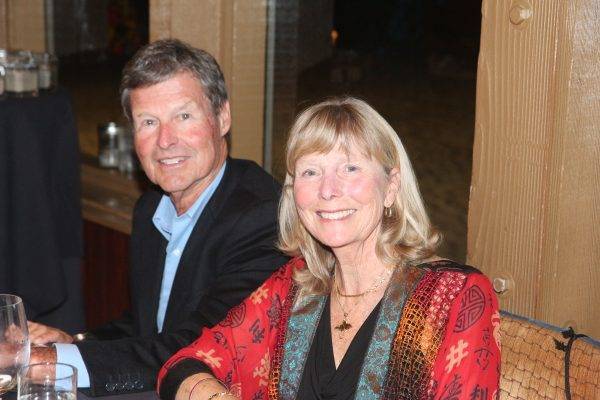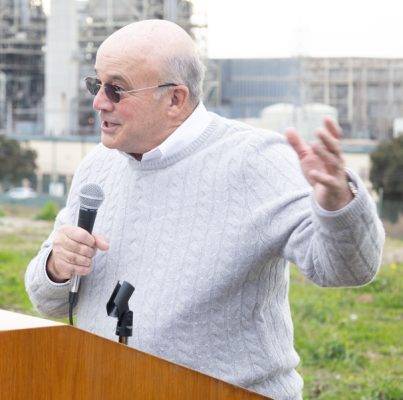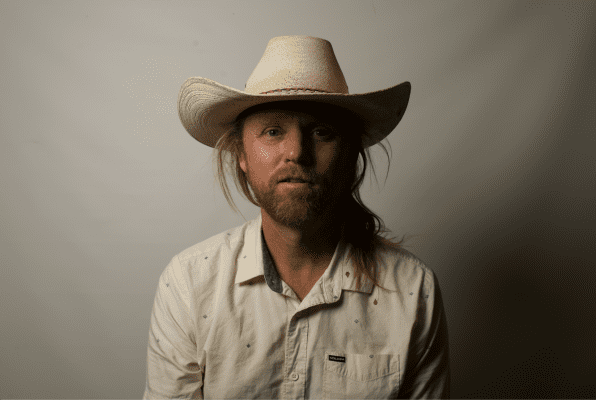The Point and Elevon represent new ways of working and shopping, as well as a turning point for El Segundo

Second in a series
This summer, Tony and Kris D’Errico spent long days working to get their new Bella Beach Kids storefront ready to open at The Point, the new shopping center in El Segundo.
The couple already own and operate two stores in one of the more coveted locations in the United States, just a block above the Manhattan Beach pier. They wanted another location with more size and better parking to expand their business. But they quickly noticed a surprising phenomenon outside their new location.
Kris frequently found herself walking through the 115,000 sq. ft. shopping center, blissfully, in the midst of what was essentially still a construction site.
“Even when the businesses weren’t open, you would walk out, and be like, ‘I want to be here,” she recalled. “It was just this feeling.”
A friend told Tony that he found himself doing the same thing — coming to the still-unopened development and hanging out by himself in its 45,000 sq. ft. plaza.
“I just come up here, sit in the center of this center, and I feel happy,” the friend told D’Errico. “Relaxed. Comfortable. It was a place I wanted to be.”
“It’s a place with a capital ‘P’,” D’Errico said. “They created an actual sense of place. I think that is very different from a traditional mall, or shopping center.”
That the long-vacant site of a former Allied Chemical plant should be transformed into anyone’s happy place is as improbable as El Segundo itself, a town of 16,700 people by night and 60,000 by day that since its founding in 1917 as Standard Oil’s second West Coast refinery town has gleefully embraced its working class identity yet today is home to more Fortune 500 companies than any other municipality in California, besides San Francisco. Even more improbably, as aerospace, the industry that along with oil served as a pillar of the town’s prosperity (the city seal depicts an airplane flying over oil stacks) has contracted, a billion dollars of new investment has flooded into El Segundo in the last few years, primarily in the form of a “new creative” boom of commercial real estate development.

But perhaps nothing is as unexpected as El Segundo’s sudden transformation not only into the South Bay’s most economically diverse and vital city but arguably its culturally coolest and most forward-thinking. Its Mayberry-esque downtown contains a cutting edge modern art museum and a silent movie theater with a 1925, wind-powered Mighty Wurlitzer pipe organ. The adjacent Smoky Hollow warehouse district is home to a burgeoning creative scene of photographers, architects (one who is designing an entire city in India), filmmakers, a gourmet popcorn maker (Popcornopolis), and an American motorcycle shop (South Bay Customs) that doubles as an art gallery and music venue.
The future of the way Americans work and shop, meanwhile, is taking place east of Sepulveda. Two developments that opened within a month of each other late this summer, The Point and Elevon at Campus El Segundo, portend to be the face of this future.
The Point is marketed as a “lifestyle center,” an oft-abused term usually masking the arrival of a prettified but largely traditional mall. The $97 million Elevon at Campus El Segundo is a 15-building, 23-acre development includes 210,000 sq. ft. of “lifestyle” office space (for sale, rather than lease) and 13,500 sq. ft. of high-end retail and dining.

Allen Mackenzie, president of Mar Ventures, which co-developed Elevon and is now headquartered there, noted on the day of The Point’s grand opening in late July that both new developments represent what has traditionally been known in community building as “the third place” — surroundings separate from the two usual social environments, home and the workplace.
“Elevon takes us to a millennial demographic with lifestyle office space,” Mackenzie said. “No longer do you have to sit in a tile office cubicle work environment. Why can’t you sit outside? Why can’t you have balconies? Why can’t you have fire pit at your office? It’s lifestyle office space, and [The Point] is lifestyle retail.”
Not a mall
The Point is unlike a traditional mall in several respects. First, it has no “anchor tenants” — that is, it’s not built around a Macy’s or Nordstrom’s or another large-scale retailer. And because of its inverted structure — the stores face each other, not outward — very little signage from its 33 storefronts is visible from the street. The Point is intended to be a brand unto itself. The stores, restaurants, and offices are curated. For each company that opened a store, several were turned away. The company that developed and leased The Point, Federal Realty, had a coherent vision for exactly what lifestyle this center was intended to serve.
“It is absolutely curated,” said Jeff Kreshek, the vice president of West Coast leasing for Federal Realty. “That’s the best word I could use…We had lot of people interested in the project, very good, qualified companies who just weren’t quite where we wanted to be. We had to cull through and say yes or no — we made a lot of very calculated decisions.”
The shop and restaurant operators who joined The Point are likewise selective about where they open. They include sought-after, regional restaurants such as Mendocino Farms and Superba Food & Bread Company; popular local operators the Simms family’s newest place, Craft Shack, which will open in the center’s plaza area; ShopHouse, Chipotle’s new “responsibly sourced” take on Southeast Asian cuisine; Hopdoddy, a burger and craft brew restaurant from Austin, Texas, that uses only beef that is hormone and antibiotic free and humanely processed; and two restaurants, North Italia and True Food Kitchens, by one of the food world’s fastest rising “restaurant concept” stars, Sam Fox.
Retailers include prAna, the yoga and outdoor clothing company that has only five other retail locations; Lucky Brand, which opened a new flagship store at The Point intended as the first step in its newly launched vision to become more than a denim company but a global “lifestyle brand”; Michael Stars, the company that started in Manhattan Beach a quarter century ago selling designer t-shirts and has evolved into a broader fashion and “luxury essentials” brand; Athleta, the Gap’s high-end women’s fitness apparel store; and “fast fashion” retailer No Rest for Bridget; and, of course, Bella Beach Kids, which is itself a curation of sorts for all manner of kids’ goods, from games to clothing to books.
Also in the mix is a creative office space above the retail, which thus far has been leased by Keller William Realty (another as yet undisclosed tenant is pending); and SoulCycle, which Fortune magazine recently described as a “sizzling-hot cult cycling chain,” one that has only 38 locations nationwide.
Overall, 28 of the 33 “doors” are already leased. Since its opening July 30, crowds have flocked to The Point.
Kris D’Errico admitted she wondered if The Point’s opening would hurt the blissful feeling its fountains, trees, benches enclosed in the center’s plaza engendered.
“We were curious if that was going to change when businesses started opening and it got populated,” she said. “But it’s even more — this buzz and energy and you can still sit on a bench and read in a park environment. It’s just a place to come be, whether it’s a first date or a couple going for dinner or coming up with the kids after school.”
In addition to the stores, The Point’s opening also launched “Movies in the Park” after dark, “Yoga in the Park” daytime activities, “Concerts in the Park” events and the promise of an ice rink in the winter months.
“You know what I love about it? It’s a downtown plaza, east of Sepulveda,” said Tony D’Errico. “I mean, people like places to sit, congregate, socialize. I think traditionally, in most of our cities in the South Bay, that has been the downtown. But this creates a space on the other side of Sepulveda, which is an amazing, small downtown plaza. It’s like a European piazza. It’s a place people will come with their kids. They’ll hang out, they’ll play, you know? Hopefully they’ll shop and dine, as well, but it’s a place to congregate and enjoy.”
Nobody was happier on The Point’s opening day than Carlos Alberini, the CEO of Lucky Brand, whose 16,000 sq. ft. store is more than twice the size of any of its other 248 Lucky stores and is the only one that includes every single item that the company sells.
“Today, I am living my dream,” he told an audience at The Point’s ribbon cutting. “Every time I come here, I don’t want to leave.”

The point of The Point
First there were the suburbs. Then came the suburban office complex. Finally, there was the mall. The South Bay has played a role in the evolution of all three of these components in the the suburbanization of America.
The post-war boom received a head start locally due to the presence of the aerospace industry, which thrived during WWII. The South Bay, which was scruffy beach towns and agricultural fields prior to the war, expanded rapidly as the well-paid aerospace jobs created a robust middle class.
Victor Gruen, the Vienna-born architect credited with designing the first highly designed “customer trap” storefronts on New York’s Fifth Avenue and later building the world’s first shopping mall, Southdale, in Edina, Minnesota in 1954, was a big presence in the South Bay. He master planned what would later be called Rancho Palos Verdes (planned around the Peninsula Center mall, which he envisioned as a civic center), wrote the plan for Redondo Beach’s King Harbor and built the South Bay Shopping Center, also in Redondo Beach.
Gruen thought malls would change America. He was correct, but not in the way he envisioned. The man dubbed “Mall Maker” would grow to despise what his creations became. He thought malls would create a more urban sense of community cohesiveness. The result was often the opposite and in fact damaged the real urban downtowns suburbs the malls were meant to feed.
According to the Atlantic Monthly, America’s infatuation with malls peaked with the construction of 19 indoor malls in 1990 and has been in sharp decline since.
What has replaced the mall is the “lifestyle center,” a trend that took off after the construction of The Grove in Los Angeles in 2002. The Grove sought to apply the lessons of Disneyland to a shopping center, making shopping more “experiential,” with grassy areas, live music, fountains, and a trolley car system. The Grove succeeded wildly.
The Point is also about creating experiences. In the age of Amazon, shoppers don’t need to leave their homes. Therefore, when they do, the experience needs to be about more than a purchase. But The Point, which is less than a quarter the size of The Grove, is also about creating a place very much both connected to and representative of the community it seeks to attract.
The local beach communities were dubbed “Surfburbia” by architectural writer Raynor Banham in his book “Los Angeles: The Architecture of Four Ecologies” because they are suburbs unusually endowed with a specific sense of place.
That sense of place, said prAna CEO Scott Kerslake, is what attracted his company to The Point. prAna distributes its clothing line online and through select stores. As a company that was launched by a couple of mountain climbing yogis named Beaver and Pam in a garage in Carlsbad in 1992, prAna has always been extremely cautious about where it locates.
“We try to chose locations that really have this nexus of people who are progressive in how they live, things like sustainability, more conscious consumers and people who are really active,” said Kerslake, who formerly lived in El Porto. “We have a store in Boulder, in a niche pocket of San Francisco, one in Denver, in a suburb of Minneapolis, Edina, and then one in Portland. “
“You live in a really good pocket,” he added.

Sam Fox, who co-founded True Food Kitchens with Harvard health guru Andrew Weil, said he is likewise extremely careful about where he places a restaurant. He was approached by both Manhattan Village Mall, which plans to renovate in coming years, and The Point.
“We are glad we chose wisely,” he said, noting the delays with the Manhattan Village project. “There was a curated mindset, open space and a park-like environment…and not just a pure retail play. I think that creates more of a sense of place and by creating a sense of place, you connect more with the community, which is important for us.”
True Food Kitchen, as Weil’s involvement indicates, has a mission: to show that simple, healthy food enjoyed in comfortable social setting is both nurturing and accessible. “The ‘healthy food’ restaurants I knew served food that’s boring, weird, or both,” Weil said in a Q&A in the True Food cookbook, co-authored by Weil, Fox, and executive chef Michael Stebner. “I tried to make it clear…I wasn’t talking about tofu and sprouts.”
“It’s not just about going out to eat,” Fox said. “It’s about, ‘This is how I live my life. This is about how I build my community with likeminded people and how I feel and go about my day.’ I am not just going to whatever location, having a meal, getting in a car and leaving. It’s more about the effect it has on who I am and how I live in my community.”

Mario Del Pero, who co-founded Mendocino Farms with his wife, Ellen Chen, is on this same page. He comes from Yuba City, a farming community in Northern California. Mendocino Farms represents a new kind of restaurant, a farm-to-table, regional chain restaurant. All his food is locally sourced. His “Save Drake Farm Salad” was specifically crafted using a carefully produced goat cheese, the sales of which literally saved a farmer who knew all his goats by name.
Del Pero also has a local connection. His first job out of college was as one of the original employees at the Baja Sharkeez in Manhattan Beach. The Sharkeez co-founders, father and son Ron and Greg Newman, remain close friends. Del Pero went to college with Greg and counts Ron as a mentor.
The Point, Del Pero says, speaks the local language.
“This area is unique,” he said. “It has The Strand and beach, but on any given day to be able to go to a contained park that has food and fun shops, it gives such a great compliment to the beach to be able to have this outdoor entertainment center.”
Del Pero also believes The Point is the next evolution in the development of the shopping center.
“Everybody is going to be here to study this, “ he said. “I’ve already seen developers come in. This is actually groundbreaking, not just for the South Bay. It’s the scale — it’s not too small, it’s not too big. I think the scale is that critical piece that Jeff and Federal Realty got right. It’s got a nice local flavor and it’s got a lot of stuff this area has never seen. So you have both. It’s a game-changer.”
Of course, if The Point is about fitting and perhaps helping define the local lifestyle, it’s also about attracting the affluent demographic whose members live that lifestyle. Hard market numbers drove the $90 million development. According to census data, the local population is 479,447, including a daytime population of 90,000 within a five minute drive. There are 188,030 households, with an average household income of $109,353 and 145,000 people with four plus years of college education. The average disposable income of households within five miles is $67,338. Add that up with the traffic numbers — 131,090 cars pass by daily on Sepulveda, and 64,250 on Rosecrans — and you have a recipe for very successful, conscious consumerism.
El Segundo City Manager Greg Carpenter, who grew up in the town he manages, said The Point is representative of his city’s evolution.
“It’s indicative of a larger transformation from heavy industrial and aerospace roots to a more diversified economy,” Carpenter said. “And one that is much more upscale.”
It’s also about El Segundo’s moment in the sun.
“From El Segundo’s standpoint, it was always in the long suffering shadow of Manhattan Beach, Hermosa Beach, and Redondo Beach,” said Jeff Kreshek, the Federal Realty vice president who leased The Point. “Those places got all the publicity and El Segundo was just kind of nestled up against the airport. But now all the cool stuff is happening in El Segundo.”
“If you shout from the mountaintop long enough and loud enough,” he added. “Eventually people are going to hear you.”

Kreshek, whose father was one of the developers of Manhattan Village Mall 30 years ago and who spent the last four years painstakingly planning The Point, said that the response to The Point has been far beyond his expectations — not just the initial crowds, but the interest from other communities.
“We are getting calls, ‘We want The Point,’” Kreshek said. “What people don’t realize is you can’t just do this anywhere. It is specific to this time and place. If you had put The Point here 15 years ago I don’t know what it would have been. Yes, there is some planning, some organizational elements, but it’s the right time, the right place, the right vision, the right parties involved, and everything that mirrors up with what the community wants that makes it look easy. I will tell you, we started four years ago, in June 2011 — four years of my life are invested in that corner. I can show you 95 merchant plans for what people are calling a little center….and probably 300 concepts we said no to.”
“You can’t pick The Point up and put it in Peoria or somewhere else and expect the same thing…but I guarantee you someone else will try. Look, this is a labor of love. And unless you believe it with every fiber of your being and live it day in and day out and have the vision and the patience to do the right thing as opposed to the expedient thing, then you can’t be a developer. If you don’t have those elements, you can’t do it this well.”


